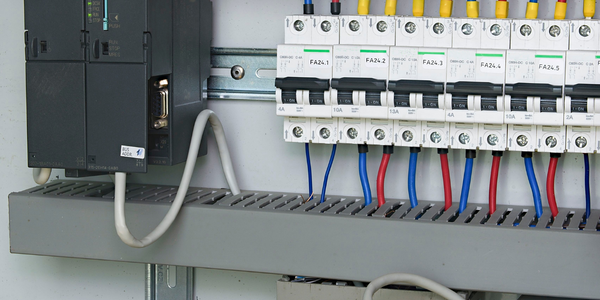Customer Company Size
Large Corporate
Region
- America
Country
- United States
Product
- Blue Yonder’s Luminate™ Planning solution
Tech Stack
- Advanced planning capabilities
- Supply chain segmentation capabilities
Implementation Scale
- Enterprise-wide Deployment
Impact Metrics
- Productivity Improvements
- Customer Satisfaction
- Cost Savings
Technology Category
- Platform as a Service (PaaS) - Application Development Platforms
Applicable Industries
- Electronics
Applicable Functions
- Discrete Manufacturing
- Logistics & Transportation
Use Cases
- Supply Chain Visibility
- Inventory Management
- Demand Planning & Forecasting
Services
- Cloud Planning, Design & Implementation Services
- Data Science Services
About The Customer
Western Digital Corporation (formerly SanDisk) is a global leader in flash memory storage solutions. Their products can be found in many of the world’s largest data centers, embedded in advanced smartphones, tablets and PCs and at hundreds of thousands of retail stores worldwide. As their business grew, they needed to migrate from homegrown, spreadsheet-based planning tools to robust, scalable solutions that would support their expanding original equipment manufacturer (OEM) channels and retail presence. They sought an integrated advanced planning solution that would help them maintain profitable growth and maximize margins while continuing to meet customer demand and increase customer satisfaction.
The Challenge
Western Digital Corporation, a global leader in flash memory storage solutions, was facing challenges with its resource-intensive spreadsheet-based planning process. The process involved four-week planning cycles with only basic planning assumptions. The company wanted a daily integrated supply chain plan that includes demand, material supply and capacity constraints and utilization, allocation and execution objectives. They also wanted visibility into demand and supply across the entire organization, including the inventory in each segment and channel, promotion plans and supply and production plans. Furthermore, they wanted to use customer segmentation and a multilayered postponement strategy to reduce overall inventory levels while better positioning products and materials to support improved customer service.
The Solution
As Western Digital’s business grew, they needed to migrate from homegrown, spreadsheet-based planning tools to robust, scalable solutions that would support their expanding original equipment manufacturer (OEM) channels and retail presence. They chose Blue Yonder’s Luminate™ Planning solution to transform their planning processes. Western Digital leverages Blue Yonder’s advanced planning capabilities to manage demand, compute statistical forecasts and translate sell-through forecast data and actuals to sell. This allows them to effectively identify optimal inventory levels and stages and manage silicon allocation. The solution is also used to manage complex demand prioritizations, optimize supply and demand responses based on material, capacity, cost and service levels and support re-planning multiple times per day based on demand signals and what-if analysis. Western Digital leverages Blue Yonder’s Planning suite to profitably balance supply to meet demand through deployment of its carefully planned manufacturing and inventory postponement strategy.
Operational Impact
Quantitative Benefit

Case Study missing?
Start adding your own!
Register with your work email and create a new case study profile for your business.
Related Case Studies.

Case Study
Remote Temperature Monitoring of Perishable Goods Saves Money
RMONI was facing temperature monitoring challenges in a cold chain business. A cold chain must be established and maintained to ensure goods have been properly refrigerated during every step of the process, making temperature monitoring a critical business function. Manual registration practice can be very costly, labor intensive and prone to mistakes.

Case Study
Predictive maintenance in Schneider Electric
Schneider Electric Le Vaudreuil factory in France is recognized by the World Economic Forum as one of the world’s top nine most advanced “lighthouse” sites, applying Fourth Industrial Revolution technologies at large scale. It was experiencing machine-health and unplanned downtime issues on a critical machine within their manufacturing process. They were looking for a solution that could easily leverage existing machine data feeds, be used by machine operators without requiring complex setup or extensive training, and with a fast return on investment.

Case Study
Cloud Solution for Energy Management Platform-Schneider Electric
Schneider Electric required a cloud solution for its energy management platform to manage high computational operations, which were essential for catering to client requirements. As the business involves storage and analysis of huge amounts of data, the company also needed a convenient and scalable storage solution to facilitate operations efficiently.

Case Study
Leveraging the IoT to Gain a Competitive Edge in International Competition
Many large manufacturers in and outside Japan are competing for larger market share in the same space, expecting a growing demand for projectors in the areas of entertainment, which requires glamor and strong visual performance as well as digital signage that can attract people’s attention. “It is becoming more and more difficult to differentiate ourselves with stand-alone hardware products,” says Kazuyuki Kitagawa, Director of Service & Support at Panasonic AVC Networks. “In order for Panasonic to grow market share and overall business, it is essential for us to develop solutions that deliver significant added value.” Panasonic believes projection failure and quality deterioration should never happen. This is what and has driven them to make their projectors IoT-enabled. More specifically, Panasonic has developed a system that collects data from projectors, visualizes detailed operational statuses, and predicts issues and address them before failure occurs. Their projectors are embedded with a variety of sensors that measure power supply, voltage, video input/ output signals, intake/exhaust air temperatures, cooling fan operations, and light bulb operating time. These sensors have been used to make the projector more intelligent, automatically suspending operation when the temperature rises excessively, and automatically switching light bulbs. Although this was a great first step, Panasonic projectors were still not equipped with any capability to send the data over a network.









